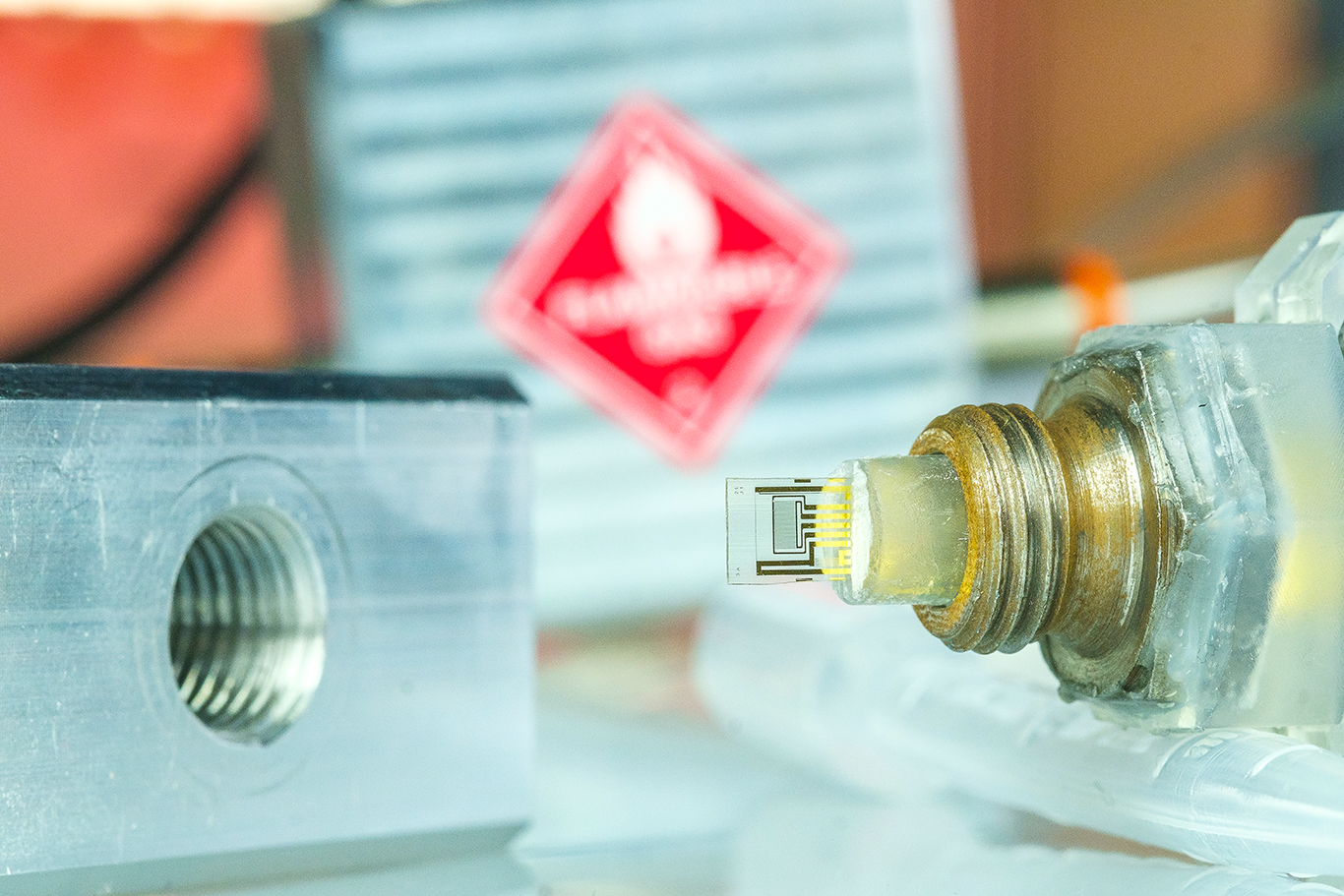Gases, liquids, and solids differ in their heat-conducting properties. For example, metal conducts heat better than plastic or wood, while water conducts heat better than air. Movement intensifies this effect: when water or air is in motion, it can transport more heat than when it is at rest.
The mechanism of thermal conduction also differs between gases, liquids, and solids. In a solid, the atoms are bound to fixed equilibrium positions; in gases, however, they are freely mobile. In gases, heat conduction is based on the movement of molecules, which transfer part of their kinetic energy to other molecules they collide with, thus transporting energy from areas with a higher temperature (i.e., greater average energy) to areas with a lower temperature.
Therefore, gases can be distinguished very well by measuring their specific thermal conductivity.
Small, energy-efficient sensors thanks to MEMS technology
Fraunhofer IPM develops cost-effective, self-testing thermal conductivity detectors (TCDs) and integrates them into compact sensor systems.
The operating principle of TCDs is tried and tested and is already used in many applications. The sensors essentially consist of a heating element that also serves as a temperature sensor. The heating power of the sensor element is proportional to the temperature and thus to the concentration of the gas. One of our main focus areas is the electrical energy required to operate the sensors. We develop thermal conductivity sensors using MEMS technology that consume less energy than previous solutions. This results in sensors that are particularly small and energy-efficient and that can be installed in battery-powered systems.
By applying the 3-omega method, we can determine the thermal conductivity, heat capacity, and flow velocity of a medium even when these parameters are unknown. This only requires the medium to be heated by a few Kelvin, which is an advantage over conventional DC selection procedures that require ten times the temperature — and thus ten times the energy — to achieve the same measurement accuracy.
Using thermal conductivity for H2 detection
At Fraunhofer IPM, we are developing innovative thermal conductivity sensors for the rapid and sensitive detection of hydrogen. As a highly flammable energy carrier, hydrogen must be continuously monitored during transport and storage, and the hydrogen infrastructure must be checked for leaks. Since hydrogen conducts heat seven times better than air, even the smallest concentrations of it in air or other gases can be detected by measuring its thermal conductivity.
